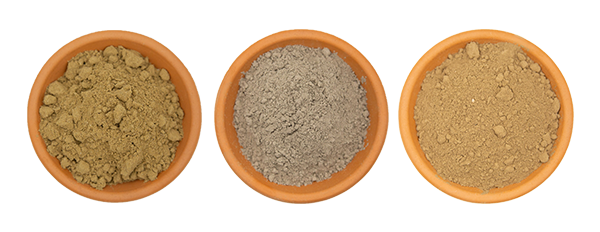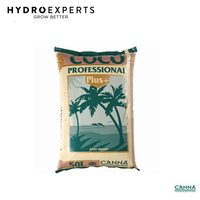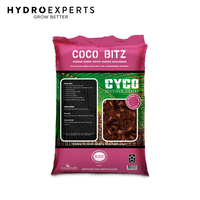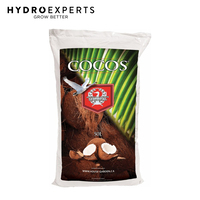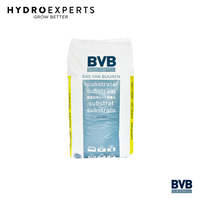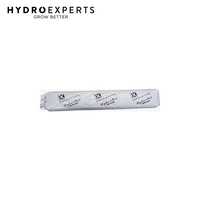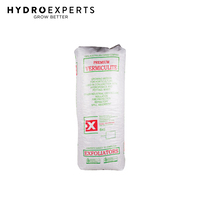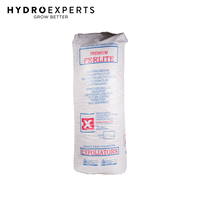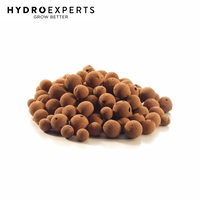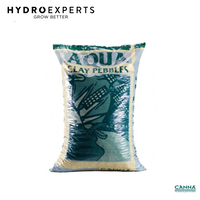Soilless Potting Mixes: The Ultimate Growing Guide
By Hydro Experts | 4 August 2020
.jpg)
Soilless potting mixes What are they Why do they exist and, How do we get the most out of them?
Soilless potting mixes What are they Why do they exist and, How do we get the most out of them? In this Hydro Experts article, we’ll dive deep into the different types of soilless mixes and, the different ways they are utilised to gain ultimate control over your growing environment.
What is soilless potting mix?
Soilless potting mixes are mostly just like regular potting mixes only they don’t contain any compost and, they also don’t provide any nutritional inputs either.
Soilless mixes rarely contain any organic or mineral nutrition. There are some exceptions, but you should treat them as sort of a nutritional blank canvas.
Soils Vs. Soilless Mix
In a usual soil-based mix, compost serves the primary purpose of introducing microbiology beneficial bacteria, microbes and fungi which have the task of breaking down inputs such as bone meal and blood meal into a soluble form that plants can uptake.
As all the microbial goodies are already in the soil base, soil growers irrigate initially with just water where soilless growers irrigate with a mild nutrient solution from the very start of their growing cycle.
Soil growers aim for minimum runoff where they water, so they don’t continually wash nutrition out of their mixes. In contrast, soilless gardeners seek at least 25% runoff out of the bottom of the pots with each irrigation.
Why not just grow in soil and avoid mineral nutrition all together?
It all boils down into one word-Control.
Soilless potting mixes give you the power and control to add the right level and type of nutrition appropriate to your plant size lifecycle and growing environment which in turn, allows you to optimise how you feed your plants.
Water Holding Capacity (WHC)
One of the essential characteristics of your chosen soil as the potting mix is to understand its water holding capacity as different products can vary considerably in their absorption capacity.
Water-holding capacity is in basic terms how much nutrient solution it can absorb. The amount of airspace in the media and the Cation Exchange Capacity (CEC) which is how readily the growing media can hold on to and release positive ions to the roots.
So in layman’s terms, water holding capacity or WHC is a measure of how absorbent or restrictive the material is. For example, Canna Cocco Professional and Growdan grow wool are two examples of highly porous or restrictive growing media.
hey can hold between five and eight times their weight in water. As they hold on to so much nutrient solution they need watering less often.
Coco Coir or just plain Coco
Coco Coir potting mixes are usually a mix of the stringy fibres which are all renewably derived from the husks of coconut palms leftover from coconut production.
Coco Coir is mostly produced in Indonesia, Southern India and Sri Lanka, which is by far the most significant global producer and to a lesser extent Mexico, Thailand in Brazil.
What is it coco coir exactly?
Glad you asked. Coco Coir husk is the part between the outer protective shell and the hard inner shell of the coconut itself. You may also Coconut palms grow near the sea, so manufacturers of hydroponic grade coco wash any residual sodium chloride away using pure water or displace it with calcium nitrate as part of the manufacturing process.
The Coco Coir manufacturing process is the primary difference between cheap coco coir and Hydroponic grade mediums. As tempting as cheaper alternatives are, you may find your medium is very high in sodium chloride, which will affect your PH levels.
Hydroponic Grade coco coir is pH buffered or pretreated with calcium nitrate, which helps to ensure a more suitable pH as you grow. find wood bark products and coconut shell chips added into the mix as well.
Aggregates
Aggregates like perlite, vermiculite, Clay balls and lava rock add drainage and airfield porosity so roots can enjoy higher oxygen levels to drive their metabolism. Aggregates are also essential amendments, especially for fast-growing fruiting plants like tomatoes and chillies.
Most growers use coco coir products straight out of the bag, and others opt for a mix that’s 20-40% perlite for added aeration which is the ideal ratio for achieving a 25% runoff after each irrigation.
Coco Coir holds a lot of moisture for Ebb and flow systems, and we’d recommend a mix that contains 30 to 50% perlite for improved drainage.
Expanded Clay Aggregate (Clay Balls)
Expanded clay aggregates are manufactured by heating clay to 2000 degrees where it effectively just pops like popcorn and develops into this lightweight, porous growing medium.
The benefits of using expanded clay aggregate are that it’s reusable and they also absorb relatively little water. They do however require very regular irrigation but on the plus side are virtually impossible to overwater.
You can also wash the medium and reuse it over and over again, which makes it extremely cost-effective as a growing medium. The initial outlay may be more a little more expensive in comparison to other soilless mixes but, you have the long term advantage of being able to wash, rinse and repeat your growing cycles with minimal fuss and expense.
Hydro Experts are an official reseller of Canna Aqua 8-16mm clay balls made in Holland. CANNA clay balls are manufactured from special types of clay that have a low soluble salt content. Because of this, they are best suited for use in hydroponic cultivation systems.
Can you make your soilless potting mix at home?
You sure can! Below are a few basic recipes for making your own at home. Toss your ingredients into a large container and mix away. We use a standard 2-litre measuring jug to scoop out the ingredients.
Straight Soilless Mix
- 4 to 6 parts Cocco (40-60%)
- 1 part perlite (20%)
- 1 part vermiculite (20%)
- You can also have only Coco and Perlite in a 60-40 ratio.
Coco Mix with Organic Compost
This is a great mix if you are going for a complete organic grow. The ideal basic mix is a 1:1:1 ratio starting ith a 25L bag of Organic Gardening Solutions No-Till Compost, then adding equal rations of Coco and amendments giving you 75L of organic mix.
75 litres will give you more than enough mix for 4x18.9L Heavy Duty Reusable Plant Smart Geo Fabric Pots or 4x21L Air pots
- 1 part Organic Gardening Solutions No-Till Compost
- 1 part Canna Coco Coir
- 1 part perlite

